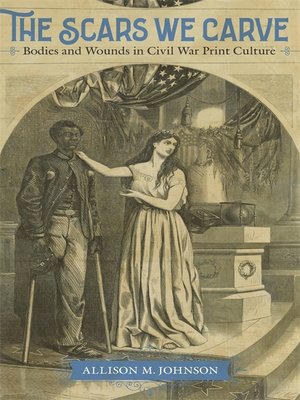
Sign up to save your library
With an OverDrive account, you can save your favorite libraries for at-a-glance information about availability. Find out more about OverDrive accounts.
Find this title in Libby, the library reading app by OverDrive.



Search for a digital library with this title
Title found at these libraries:
| Library Name | Distance |
|---|---|
| Loading... |
In The Scars We Carve: Bodies and Wounds in Civil War Print Culture, Allison M. Johnson considers the ubiquitous images of bodies—white and black, male and female, soldier and civilian—that appear throughout newspapers, lithographs, poems, and other texts circulated during and in the decades immediately following the Civil War. Rather than dwelling on the work of well-known authors, The Scars We Carve uncovers a powerful archive of Civil War–era print culture in which the individual body and its component parts, marked by violence or imbued with rhetorical power, testify to the horrors of war and the lasting impact of the internecine conflict.
The Civil War brought about vast changes to the nation's political, social, racial, and gender identities, and Johnson argues that print culture conveyed these changes to readers through depictions of nonnormative bodies. She focuses on images portrayed in the pages of newspapers and journals, in the left-handed writing of recent amputees who participated in penmanship contests, and in the accounts of anonymous poets and storytellers. Johnson reveals how allegories of the feminine body as a representation of liberty and the nation carved out a place for women in public and political realms, while depictions of slaves and black soldiers justified black manhood and citizenship in the midst of sectional crisis.
By highlighting the extent to which the violence of the conflict marked the physical experience of American citizens, as well as the geographic and symbolic bodies of the republic, The Scars We Carve diverges from narratives of the Civil War that stress ideological abstraction, showing instead that the era's print culture contains a literary and visual record of the war that is embodied and individualized.







